Course Offerings by Semester
For complete and accurate meeting days and times for courses of interest, and to register, please visit the Ohio State Master Course Schedule. The master schedule is maintained by University Registrar and includes information about courses offered across all of our campuses. While we make every effort to ensure that the information here is complete and correct, the Ohio State Master Course Schedule linked above is guaranteed to be the most accurate.
Autumn 2022 Course Offerings
History of Art 2001 - History of Western Art I: Ancient and Medieval Worlds
Professor Karl Whittington
Class #17761 (+ Recitation) | IN PERSON
Lecture: MON & WED 9:10-10:05AM | Recitation: THUR or FRI 9:10-10:05AM
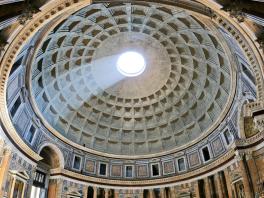
This course examines the history of Western Art (architecture, painting and sculpture) from the third millennium BCE through the fifteenth century CE. Rather than a complete “survey” of that period, the course will concentrate its attention on a select group of representative monuments. We will examine not only the monuments themselves, but also the historical context in which they were produced in order to explore their purpose and the way that they functioned. There will be a strong emphasis on visual analysis and understanding how visual forms convey meaning and relate to the viewer. Our goal is to impart not only a body of knowledge but also a set of critical tools, which you should be able to apply to even material not specifically covered in this course.
- This course is available for EM credit
- GE VPA and historical study and diversity global studies course
History of Art 2001D - History of Western Art I: Ancient and Medieval Worlds
Class #26782 | ONLINE | Fully Asynchronous
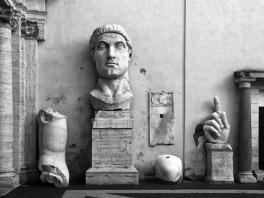
This course examines the history of Western Art (architecture, painting and sculpture) from the third millennium BCE through the fifteenth century CE. Rather than a complete “survey” of that period, the course will concentrate its attention on a select group of representative monuments. We will examine not only the monuments themselves, but also the historical context in which they were produced in order to explore their purpose and the way that they functioned. There will be a strong emphasis on visual analysis and understanding how visual forms convey meaning and relate to the viewer. Our goal is to impart not only a body of knowledge but also a set of critical tools, which you should be able to apply to even material not specifically covered in this course.
- This course is available for EM credit
- GE VPA and historical study and diversity global studies course
History of Art 2001 Honors - History of Western Art I: Ancient and Medieval Worlds
Professor Ravi Binning
Class #35862 | IN PERSON | TUE & THUR 11:10AM-12:30PM
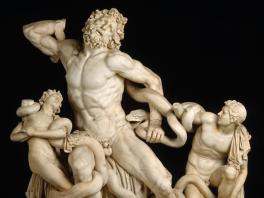
This course examines the history of Western Art (architecture, painting and sculpture) from the third millennium BCE through the fifteenth century CE. Rather than a complete “survey” of that period, the course will concentrate its attention on a select group of representative monuments. We will examine not only the monuments themselves, but also the historical context in which they were produced in order to explore their purpose and the way that they functioned. There will be a strong emphasis on visual analysis and understanding how visual forms convey meaning and relate to the viewer. Our goal is to impart not only a body of knowledge but also a set of critical tools, which you should be able to apply to even material not specifically covered in this course.
- This course is available for EM credit
- GE VPA and historical study and diversity global studies course
History of Art 2002 - History of Western Art II: Europe and the United States, Renaissance to Modern
Professor Andrew Shelton
Class #17766 (+ Recitation) | IN PERSON
Lecture: MON & WED 10:20-11:15AM | Recitation: THUR or FRI 10:20-11:15AM
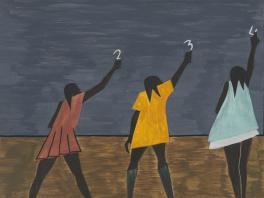
This course examines the art of Europe and the United States from about 1400 to the present, with an emphasis on developments in painting. Rather than a traditional survey of that period, the course will concentrate on a select group of representative works that shaped—and were shaped by — Western social, political, economic, and intellectual history. There will be a strong emphasis, too, on questions of analysis and interpretation — including, in some cases, the changing history of the artworks’ reception. The goal will be to impart not only a body of knowledge but also a set of critical tools, including visual literacy, that students will be able to apply to a wide range of material not specifically covered in the course.
- This course is available for EM credit
- GE VPA and historical study and diversity global studies course
History of Art 2002D - History of Western Art II: Europe and the United States, Renaissance to Modern
Class #21846 | ONLINE | Fully Asynchronous
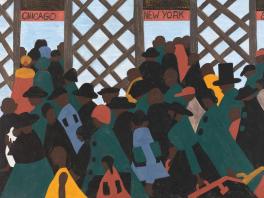
This course examines the art of Europe and the United States from about 1400 to the present, with an emphasis on developments in painting. Rather than a traditional survey of that period, the course will concentrate on a select group of representative works that shaped—and were shaped by — Western social, political, economic, and intellectual history. There will be a strong emphasis, too, on questions of analysis and interpretation — including, in some cases, the changing history of the artworks’ reception. The goal will be to impart not only a body of knowledge but also a set of critical tools, including visual literacy, that students will be able to apply to a wide range of material not specifically covered in the course.
- This course is available for EM credit
- GE VPA and historical study and diversity global studies course
History of Art 2003 - The Art and Visual Culture of East Asia
Professor Christina Mathison
Class #17772 (+ Recitation) | IN PERSON
Lecture: MON & WED 10:20-11:15AM | Recitation: THUR or FRI 11:30AM-12:25PM
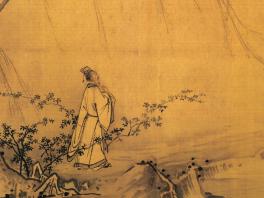
This course offers an introduction to the visual arts in East Asia, from the Neolithic through today. The course examines in particular the relationship between cultural production and changing notions of authority in East Asia in a comparative historical perspective. Case studies will be drawn from China, Korea, Japan, and neighboring regions. Issues examined include: religion and early state formation; courtly culture and monumentality; the development of urban popular culture; the age of empire; art and modernization.
History of Art 2003 Honors - The Art and Visual Culture of East Asia
Professor Julia Andrews
Class #34907 | IN PERSON | MON & WED 9:35-10:55AM
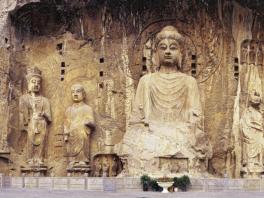
This honors course is a thematic introduction to the major artistic and cultural trends of East Asia. We will study major developments and issues in the arts of China, Japan, and Korea, discussing both cross-cultural artistic flows and the many cultural and artistic differences between cultures in the region. Major monuments of East Asian art and architecture will serve as our primary evidence for explorations of the culture, religions, and history of the region.
History of Art 2301D: Classical Archaeology
Professor Mark Fullerton
Class #27926 | ONLINE | Fully Asynchronous
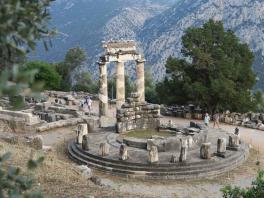
This course is concerned with the study of the Classical past through its material remains, especially, works of art – architecture, sculpture and painting. Indeed, the study of ancient Greek and Roman art has for centuries been embedded within the field of Classical Archaeology, for reasons that we will closely consider.
The term “Classical” here refers to the Greek and Roman cultures of the Mediterranean world beginning with the palace civilizations of the Aegean Bronze Age and extending through the third century of the Roman Empire (c.2000 BCE-3000 CE). The objective of the course is to familiarize the student with works of art from ancient Greece and Rome, as well as the major archaeological discoveries and controversies of the past two centuries. The selection of sites and monuments is not comprehensive but is intended to showcase important developments within the field, especially in cases where archaeology has provided evidence that challenges preconceived notions of Greek and Roman culture.
- Prereq: Not open to students with credit for Clas 2301 or History 2210
- GE cultures and ideas and historical study and diversity global studies course
History of Art 2901D: Intro to World Cinema
Professor Kris Paulsen
Class #26703 | ONLINE | Fully Asynchronous
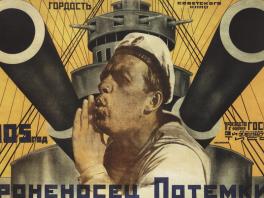
This course will introduce students to the history of film as an artistic medium and a global art form. We will track technological, aesthetic, and formal developments in its evolution from photographic and proto-cinematic technologies to digital cinema (roughly 1827-2001) by studying particular masterpieces, and focusing on the role of the director or auteur. We will pay close attention to the medium’s complex relationship to time, its changing materiality (and “medium specificity”), and its fraught relationship to truth and reality. Students will engage in a historical and formal study of international cinema through a chronological survey of its major forms, techniques, and its relationship to the broader history of art, as well as social and political history. We will sample its major and “minor” forms, from Hollywood productions to art gallery experiments and cinema from the developing world. Students will be introduced to the grammar of film through a historical account of its formal evolution and the stylistic analysis of the visual and narrative structures of individual films.
- GE VPA and diversity global studies course
History of Art 3521 - Renaissance Art
Lecturer Kristen Adams
Class #27513 | IN PERSON | MON & WED 5:30-6:50PM
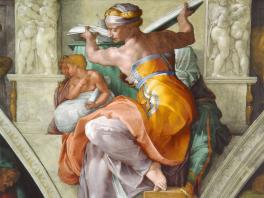
This course offers a panoramic introduction to the greatest artists and masterpieces of the Italian Renaissance from its beginnings in Florence through its triumph in Rome and Venice. After setting the stage with a brief overview of the art of the Late Gothic period in Italy, lectures will trace the nature of the revolutionary changes that transformed painting and sculpture in the 15th century and 16th centuries. One major purpose of the course will be to clarify the special characteristics of Renaissance art that continue to have their place with art and artists even today.
History of Art 3901 - World Cinema Today
Senior Lecturer Mark Svede
Class #27043 | IN PERSON | TUE & THUR 5:30-6:50PM
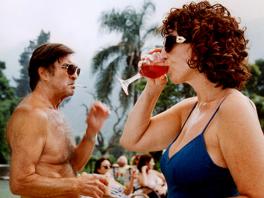
This course will survey the best of world cinema within the past decade or two, including representative examples of national cinemas, such as (potentially, since the selections would change) Iranian, Chinese, Taiwanese, and Indian; ethnic cinemas, such as (potentially) Kurdish, Jewish diaspora, and Quebecois; regional cinemas, such as (potentially) Eastern European and Middle Eastern cinemas; continental cinemas, such as African and South American; global cinema, such as Euro-American, Hong Kong, and Dogme 95; and the cinemas of civilizations, such as Islamic, Judeo-Christian, and Confucian. Not all these categories, or others that are possible, are represented in any given quarter.
History of Art 4001 - Envisioning the Nation: Modern and Contemporary Art in Asia
Professor Namiko Kunimoto
Class #26702 | IN PERSON | TUE & THUR 3:55-5:15PM
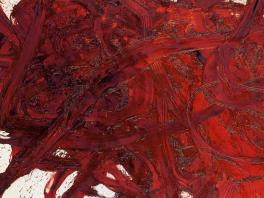
This course will teach art history majors how to write about art in a clear and compelling manner. Students will also improve their ability to critically engage with texts and do in-depth visual analysis. Through our readings, discussion, and careful looking at images, students will consider the ways the state has been represented, reacted against, and questioned in Asian and North American art. How did events such as the Pacific War impact the art world and how did representation in turn inform competing ideologies of nationhood and gender? How has globalization affected artistic practice? While addressing these issues we will examine various works of modern and contemporary art, including film, installation, photography, painting, and performance art. This course is an excellent opportunity to learn more about the exciting world of avant-garde art in Asia.
History of Art 4005 - An Introduction to Artistic Media and Techniques
Class #27512 | IN PERSON | TUE & THUR 2:20-3:40PM

This course introduces students to the major media and techniques used in Asia throughout history. We will examine the process and techniques involved in the production of Bamboo, Ceramics, Drawing, Epigraphy, Ivory, Lacquer, Mandalas, Metals, Painting, Paper, Prints, Silk, Stone, Textiles, and Wood. Lectures and coursework will center around understanding the media and techniques of these art forms and analyzing the relationship between materials and meaning. The course will also involve the study of the limitations of some of these media and the approaches to conservation.
History of Art 4016 - Senior Research Seminar: Exhibiting and Collecting American Art
Professor Jody Patterson
Class #26731 | IN PERSON | WED & FRI 11:10AM-12:30PM
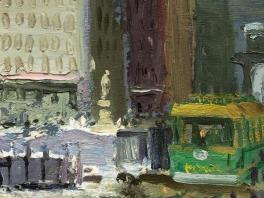
The senior research seminar is designed to augment the research and writing skills of History of Art majors. It will investigate aspects of the histories and theories of American Art within a framework sensitive to the varying aesthetic, political, and ideological agendas operating at key historical moments in the cultural formations of the United States. Close attention is given throughout the seminar to the role of institutions and patronage in the production and reception of artworks. The shifting status of American Art within international art-historical narratives will be examined, as will issues around gender, race, and identity.
Initial meetings of the senior research seminar will be focused on the historiography of American Art, in addition to discussions around research methods in preparation for conducting field work. For the first time, this seminar will include a travel portion over Fall Break (October 13-16, 2022) that will enable students to view artworks first-hand. This optional (but highly encouraged) part of the class will be fully funded for all enrolled students. Students will be able to visit relevant museums and collections with the course instructor, conduct their own research, and meet with History of Art alumni working in the arts in the city. The final sessions will be devoted to individual student presentations which will then form the foundation for a research paper due at the end of the semester.
History of Art 4030 - Art and the Museum
Lecturer Sarah Schellinger
Class #36846 | IN PERSON | MON & WED 3:55 - 5:15PM

Museums have become public institutions that collect, preserve, document, exhibit, and interpret cultural materials for the benefit of the public. This course will examine museum collections from functional, historical, material, and aesthetic perspectives. Students will be expected to critically engage with these perspectives throughout the semester and in their course assignments. Case studies, guest lectures, and virtual museum visits will be used to demonstrate evolving theories, practices, laws, and ethical implications of collecting “cultural materials,” which is broadly defined to include the visual arts as well as historical and archaeological objects. An important component of the course will be devoted to examining the role of museums in defining cultural identity, legitimacy of ownership for materials collected during colonial eras, and repatriation of materials to original countries and/or communities. We will also consider how museums are redefining themselves today as educational, social, and cultural institutions.
History of Art 4212 - Egyptian Art and Archeology
Lecturer Sarah Schellinger
Class #27514 | IN PERSON | MON & WED 2:20-3:40PM
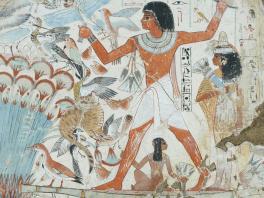
Egyptian art is some of the most iconic from the ancient world. The aim of this course is to provide an overview of the major sites, monuments, and objects throughout ancient Egyptian history, from the Predynastic through the Graeco-Roman periods, that shaped the way the Egyptians visualized their world. At the end of the semester, we will also examine the legacy of Egyptian-style art over the centuries.
History of Art 4411 - Early Christian and Byzantine Art
Professor Ravinder Binning
Class #28551 | IN PERSON | WED & FRI 3:55 - 5:15PM
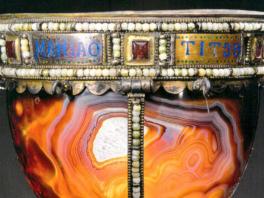
This course introduces the exciting and mysterious art and architecture of the medieval Mediterranean world. It moves from the earliest and secret Christian paintings of subterranean Rome to the eclectic arts of Byzantium from Istanbul and Venice to Egypt and Georgia. We will explore the intimate connection between art and its environments, whether on holy mountains or in remote caves and deserts, and we will confront images and objects once believed to possess the power of legendary figures and the magical properties of rare materials. Additionally, the course will introduce major monuments in relation to the phenomena of medieval pilgrimage, ritual, healing, and authority.
History of Art 4541 - 17th-Century Art in Italy and Spain: Power, Spectacle, Rivalry, and Virtuosity
Lecturer Hannah Segrave
Class #37015 | IN PERSON | TUE & THUR 12:45 - 2:05PM
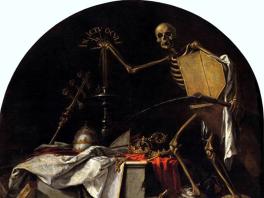
This course is a rich overview of the major artists, objects/monuments, and functions of visual imagery in Italy and Spain from ca. 1580 to 1700. Organized around the pressing questions and themes of Baroque Art, this course explores issues such as the transformation of religious imagery after the Reformation, the relationship between shifting art theory and the practices of art-making, the intersection between imperial expansion and materiality, the ways in which artists fashioned public personas, the rise of new genres of painting and specialized art markets, how contemporary audiences viewed and interacted with images and objects, and the transmission and translation of iconography and ideas across the European continent. We will also look in-depth at several artists, such as Gianlorenzo Bernini, the Carracci, Caravaggio, Artemisia Gentileschi, Nicolas Poussin, Jusepe de Ribera, and Diego Velazquez, to discuss how “superstar” artists impacted not only their peers but also the way that we talk and think about Baroque Art today.
History of Art 4640 - Contemporary Art Since 1945
Professor Christopher Stackhouse
Class #34908 | IN PERSON | MON & WED 9:35-10:55AM

When World War II ended in 1945 that year became at once a geopolitical marker of Occidental contemporaneity, and it inspired an urgent embrace of cultural cosmopolitanism for artists and intellectuals. In the aftermath of such violent global upheaval (that included pogroms, weaponized starvation, the use of nuclear explosives, the modernization of slavery, governmental resistance to the advancement of human and civil rights, etc.) the traditional boundaries of the arts were necessarily challenged, scrambled, and reordered. The impact such ensuing change had on the arts called for diverse modes of creative response to the social demands of a fraught but conversely optimistic post-war period. In lieu of isolated avant-gardist concepts of freedom, which dominated the late 19th and early 20th century period in the West, the reevaluation of visual, lingual, and sonic expression from the 1940’s to the present has insisted on radical inclusivity. Our study of what constitutes contemporary art under these conditions will pay respect to the development, in the general sense, of the plastic arts and the performative possibilities in the experience of artistic (aesthetic) events that spill into the paradox of universal personhood.
History of Art 5001 - Alternative Histories
Professor Byron Hamann
Class # UG - 35222 | G - 35223
ONLINE | TUE & THUR 11:10AM-12:30PM
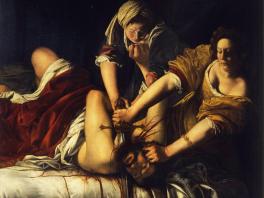
How is the past remade in the present? What strategies and techniques have been developed by academic historians (in disciplines ranging from History to Anthropology and Archaeology to Art History) to imagine different pasts? How do these approaches overlap with the alternative histories created by filmmakers, novelists, musicians, and artists? Above all, how do historians both within and beyond the university deal with non-alphabetic traces of the past—sources that are visual, material, or sonic? How can “histories” be produced without alphabetic writing? In this course, we will explore these issues by reading and viewing a wide range of materials: paintings, tapestries, documentaries, museum exhibits, websites, musical recordings, steampunk novels, Mesoamerican hieroglyphs, and of course academic essays and books.
History of Art 5901 - Silent Cinema, 1895-1927
Lecturer Mark Svede
Class # UG - 34912 | G - 94913
IN PERSON | TUE & THUR 3:55-5:15PM

A survey of the evolution of silent film from its origins as a technological novelty to its fullest realization as an internationally divergent art form. In addition to considering stylistic trajectories, this course will examine the development of viewing habits and expectations, the cultivation and accommodation of diverse audiences, consolidation of a creative industry and its interface with broader economic forces, and the social consequences of cinema’s ascendancy.
History of Art 6001 - Historical and Conceptual Bases of Art History
Professor Daniel Marcus
Class #34905 | IN PERSON | TUE 2:15-5:00PM
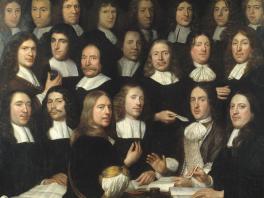
This course is designed to introduce graduate students to foundational ideas concerning art and the discipline of art history. We will read canonical texts by art historians as well as influential writings in related fields, including philosophy and anthropology.
History of Art 7020 - Curatorial Elective - Exhibition Making at the CMA
Professor Kris Paulsen
Class #34906 | IN PERSON | THUR 2:15-5:00PM
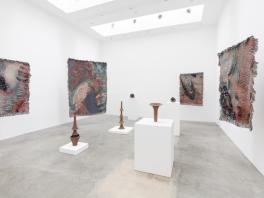
Our work in this class will be to produce an exhibition for the Columbus Museum of Art, slated to open in Pizzuti Collection building in SP/SU 2023. Together, we will work through the entire process of researching, planning, and writing for an exhibition. The exhibition will be a solo presentation of work by Sarah Rosalena. Students will work with the artist, professor, and CMA curators and staff to plan the exhibition and to produce all the texts for the installation, press, and catalog. We will work collaboratively, workshopping each other’s work, developing our own arguments, and syncing with the institutional voice. The class will include meetings at the CMA, a field trip to the FRONT Triennial in Cleveland, and visits to art institutions around Columbus.
Information on the artist: Sarah Rosalena (Wixárika) a Los Angeles-based artist working at the intersections of critical craft and indigenous futurisms through topics such as Artificial Intelligence and data analytics, astrogeology, and deep space astronomy. For several years, Rosalena has been working in collaboration with NASA’s Jet Propulsion Laboratory on work related to the exploration and future colonization of Mars. In her own words, she creates hybrid objects out of ceramic and textile that “function between human/nonhuman, ancient/future, handmade/autonomous to override power structures rooted in colonialism. They collapse binaries and borders, creating new epistemologies between Earth and Space.” More information about Rosalena can be found here: https://www.sarahrosalena.com/
History of Art 8811 - Border Crossing in Modern and Contemporary Art
Professor Julia Andrews
Class #36886 | IN PERSON | WED 2:15-5:00PM
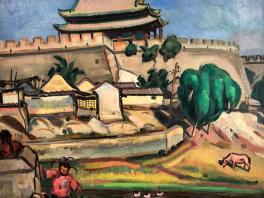
Taking Asia as a starting point, this seminar will take as its subject matter the underexamined flows of artistic and cultural ideas across national and cultural borders in the twentieth and twenty-first centuries. We will read a series of case studies, explore the art at the juxtaposition of cultural exchanges, and discuss issues in interpretation and methodology. Each student will write and present to the class their own case study that touches on this phenomenon, a project that need not be limited in geographical or temporal scope to the course readings.
